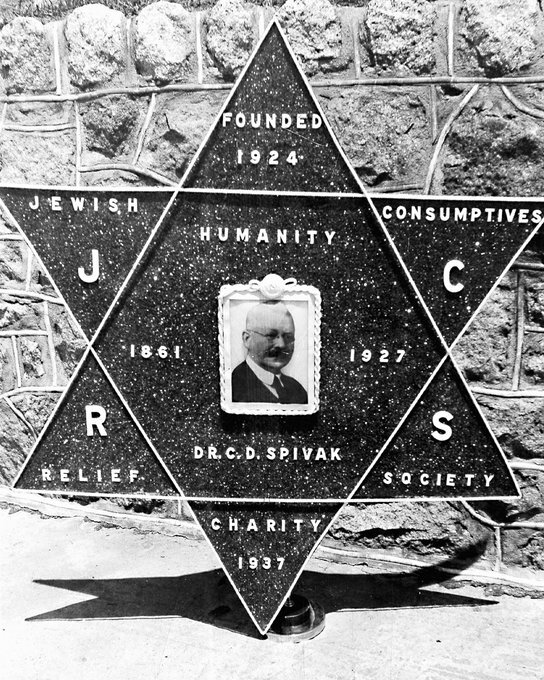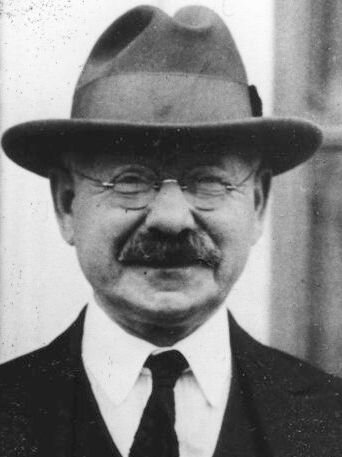In today’s page of Talmud there is a lot of astronomy. We will focus on just one aspect, the question of how soon after the conjunction the new lunar crescent may be seen.
ראש השנה כ, ב
מְחַשְּׁבִין אֶת תּוֹלַדְתּוֹ. נוֹלַד קוֹדֶם חֲצוֹת — בְּיָדוּעַ שֶׁנִּרְאָה סָמוּךְ לִשְׁקִיעַת הַחַמָּה. לֹא נוֹלַד קוֹדֶם חֲצוֹת — בְּיָדוּעַ שֶׁלֹּא נִרְאָה סָמוּךְ לִשְׁקִיעַת הַחַמָּה
They calculate the molad; if the molad occurred before midday, [so that there are at least six more hours left of the day,] it is known that the moon will be visible close to sunset. If, however, the molad did not occur before midday, so that there are fewer than six hours left of the day, it is known that the moon will not be visible close to sunset.
In this uncontested declaration, the Talmud states that the new moon can be seen six hours after the molad. But this statement simply does not align with reality. Before we go any further here is a reminder of the astronomical facts we will be discussing.
A very young moon setting in the west shortly after sunset. This is what the Bet Din in Jerusalem was looking for in order to declare the start of a new Jewish month. Photo taken by Susan Gies Jensen on February 10, 2013, in Odessa, Washington. From here.
At the time of a lunar conjunction, the sun the earth and the moon fall on a straight line. This line-up is around the time of the molad, but as we have explained elsewhere, it is certainly does not happen at the same time as the molad. As a quick proof consider the last solar eclipse over North America, that took place on Monday August 21, 2017. At 15:46 GMT (which was 5:58pm in Jerusalem) the moon started to move across the face of the sun. The total eclipse - when the moon directly covered the sun, occurred at 18:25 and 35 seconds GMT, which was 8:25:35pm in Jerusalem. That is the true astronomic lunar conjunction. But the molad for that month (which was Rosh Chodesh Elul) was announced as “Tuesday, August 22, at 10:44 a.m. and 15 chalakim” (Jerusalem time) — about 12 hours and 20 minutes hours later. So the lunar conjunction and the calculated molad certainly do not occur at the same time.
Anyway, when the sun, the moon and the earth line up in this way, the side of the moon that is facing the earth is completely dark, and so it cannot be seen. The moon is invisible.
The new moon around the time of the molad. It is invisible.
As the moon continues its orbit around the earth, it moves away from the conjunction, and the side of the moon facing the earth can then catch a sliver of sunlight, which it then reflects down to us. At that moment, the new moon can be seen. This is the situation our present tractate of Talmud, Rosh Hashanah, is discussing. Here is what the moon looks about three days after the conjunction. Notice how we can now see the new crescent.
The new moon, several days after the conjunction.
The question is, how much does the moon have to move in its orbit before that sliver of the new crescent can be seen here on earth? As we have seen, according to the passage in today’s page of Talmud, the new moon is visible a mere six hours after the conjunction. Here is Rashi:
נולד קודם חצות - היום בידוע שנראה היום קודם שתשקע החמה שאין הלבנה מתכסה מבני א"י שהם במערב אלא שש שעות אחר חדושה מתוך קוטנה שהלבנה לעולם בשש שעות לאחר חדושה בקרן מערבית דרומית ונראית להם
If the conjunction is before midday [i.e. 12 noon] - then the moon can certainly be seen before sunset [which is at 6.00pm] because for those living in Israel to the west of Babylon the moon is only invisible for six hours after the conjunction. Six hours after the conjunction the moon is always in the south-western sky and can be seen.
The Sages of the Talmud and those who interpreted them, like Rashi, took it as axiomatic that once the moon is six hours “old” which is to say, once six hours have passed from the time of the conjunction, a sliver of the new moon, may be visible, if the other atmospheric conditions, like a lack of clouds, are just right. The problem is, this does not appear to be anywhere near correct.
An Image of the New Moon at the Molad
On July 8, 2013 a French amateur astronomer named Thierry Legaultin managed to capture the moon at the precise instant it was new. His image, (below) shows the thinnest of lunar crescents, in full daylight (since a new moon is always near the sun in the sky). Legault noted that “it is the youngest possible crescent, the age of the moon at this instant being exactly zero. Celestial north is up in the image, as well as the sun. The irregularities and discontinuities are caused by the relief at the edge of the lunar disk (mountains, craters).”
“In order to reduce the glare,” he wrote, “the images have been taken in close infrared and a pierced screen, placed just in front of the telescope, prevents the sunlight from entering directly in the telescope.” Like this.
The youngest moon visible to the naked eye - It’s not six hours
Legault’s record is certainly impressive, but it’s not really helpful for our discussion, since the Mishnah and Talmud were written in an era long before infrared telephoto lenses, and describe the appearance of the new moon with the naked eye. So what is the earliest time that the new moon can be seen under those circumstances?
According to Debroah Byrd in an article in EarthSky, “a longstanding, though somewhat doubtful record for youngest moon seen with the eye was held by two British housemaids, said to have seen the moon 14 and three-quarter hours after new moon – in the year 1916.”
A more reliable record was achieved by Stephen James O’Meara in May 1990; he saw the young crescent with the unaided eye 15 hours and 32 minutes after new moon. The record for youngest moon spotted with the eye using an optical aid passed to Mohsen Mirsaeed in 2002, who saw the moon 11 hours and 40 minutes after new moon. But Legault’s photograph at the instant of new moon? That record can only be duplicated, not surpassed.
Ok, so the accepted current record stands at over 15 hours after the conjunction, which is two-and a half times as long as the Talmud declares such a moon could be visible. How might we explain this massive discrepancy?
The earth’s atmosphere back then was certainly a lot cleaner and less polluted with soot and other particles. That would make viewing small objects in the sky a lot easier. And there was no light pollution back then either, which is a huge obstacle in viewing the night sky. But these factors alone are not enough to allow a moon only six hours old to be viewed. And don’t suggest that people had better eyesight in the Talmudic era. According to Ivan Schwab, a professor of ophthalmology at the University of California, and author of Evolution's Witness: How Eyes Evolved. “As long as primates have been around, there's probably been myopia," though the rates of myopia have skyrocketed over the past three centuries. Although genes and nutrition may play a role in nearsightedness, education and myopia seem to be linked, suggesting that when people do a lot of close work, their eyes grow longer — the better to focus up close, but the worse for long-distance vision. So if you are an avid reader, you are unlikely to be a good witness to come before the Bet Din and testify that you had seen an early new moon.
In short, the Talmud’s claim that the new moon can (and perhaps can usually) be seen six hours after the conjunction cannot be supported, based on what we know today. It’s not even close. Talmudology welcomes its readers to propose some solutions for this conundrum.
Kiddush LevanaH in Islam
Jews are not the only people whose tradition requires the new moon to be observed by witnesses and reported to a central authority. Our Muslim brothers and sisters have a similar requirement in Islam; the new moon also drives their calendar, known as the Hijri Calendar (ٱلتَّقْوِيم ٱلْهِجْرِيّ at-taqwīm al-hijrīy) and today’s Islamic date is 23rd Rabi ul Awal, 1443h.
Abdullah al-Khodairi at work in the Saudi dessert. From here.
In 2016 Al-jazeera featured an article about Abdullah al-Khodairi, the man appointed by the Saudi authorities to observe the tiny crescent of the new moon that indicates the start of the holy month of Ramadan. It was a responsibility that ran in his family; Abdullah recalled climbing a hill with his father and grandfather in 1979, when he was still in high school, observing the moon and then running back to his family to declare the beginning of Ramadan before the radio did. He is now the the head of the observatory at Majmaah University in Hotat al-udair and the author of a number of books on the moon, astronomy and Islam.
Just a few meters from Masjid al Haram mosque, which houses the Kaaba in Mecca, is the Abraj Al-Bait, the “Towers of the House," which is a complex of seven skyscraper hotels. In the central hotel tower is the Makkah Clock Royal Tower, which has the world's largest clock face (and third- tallest building). The Clock Tower Museum occupies the top four floors of the tower, where each floor is dedicated to a particular aspect of the relationship between astronomy and the human measurement of time. If you’d like to plan a visit you should click here, but if, like me, you travel on an Israeli passport, you will have to delay your trip until the Abraham Accords, which normalized diplomatic relationships between Israel and the UAE and Baharain, are ratified in Saudi Arabia; Israelis are still are still prohibited from entering the country. When you do visit, you can discuss the conundrum in today’s page of Talmud with the experts there. Perhaps they will even provide a satisfactory solution.
“אם יאמר לך אדם יש חכמה בגוים תאמן
If a person tells you that there is wisdom among the nations of the world, believe them...”














